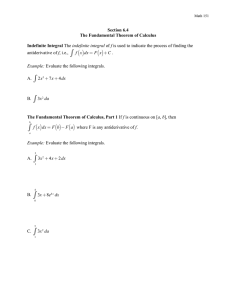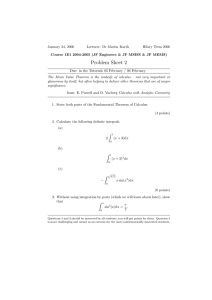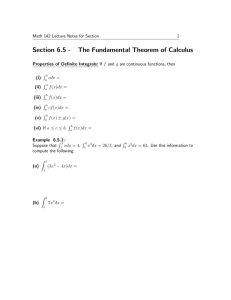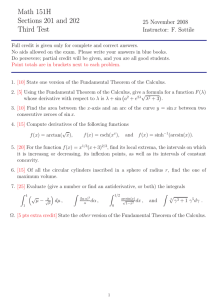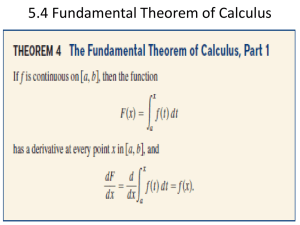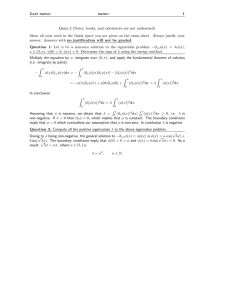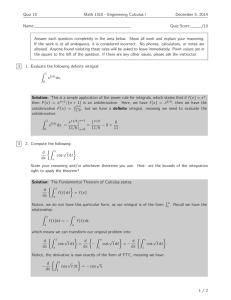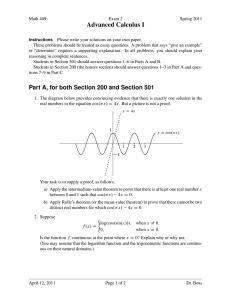MATH 151 Engineering Math I, Spring 2014 JD Kim Week15
advertisement
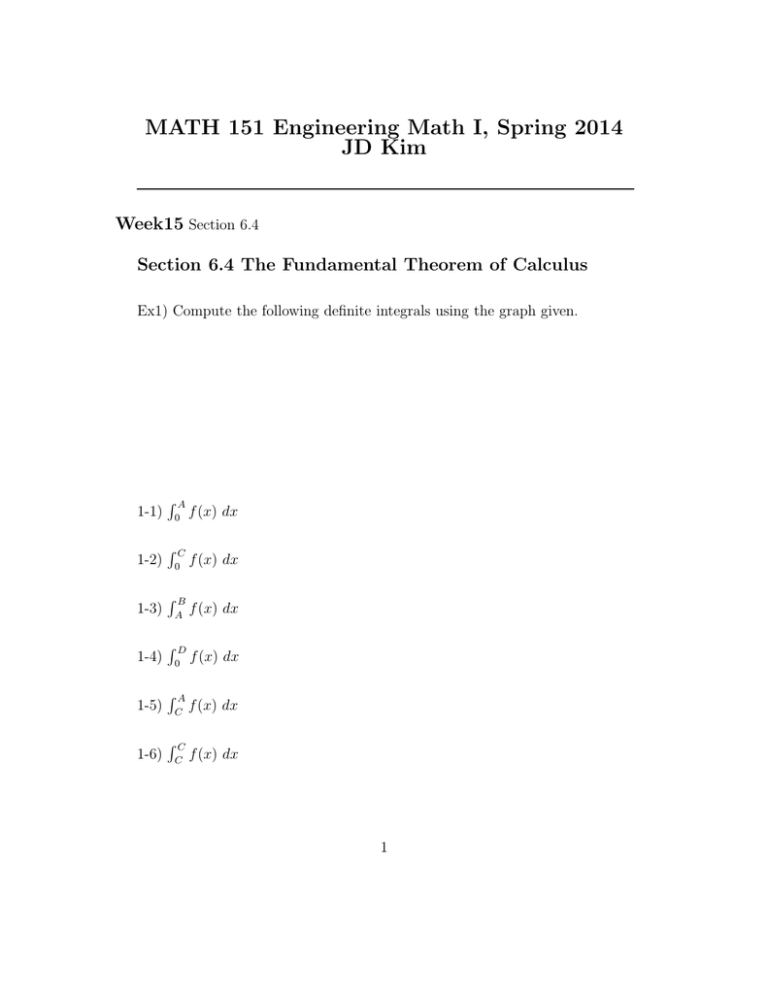
MATH 151 Engineering Math I, Spring 2014 JD Kim Week15 Section 6.4 Section 6.4 The Fundamental Theorem of Calculus Ex1) Compute the following definite integrals using the graph given. 1-1) RA f (x) dx 1-2) RC f (x) dx 1-3) RB f (x) dx 1-4) RD f (x) dx 1-5) RA f (x) dx 1-6) RC f (x) dx 0 0 A 0 C C 1 The Fundamental Theorem of Calculus 1. Part I If f is continuous on [a, b], then the function g defined by Z x g(x) = f (t) dt a is continuous on [a, b] and differentiable on (a, b) and g ′ (x) = f (x). 2. Part II If f is continous on [a, b], then Z b a f (x) dx = F (b) − F (a), where F is an antiderivative of f . 2 Rx Ex1) If g(x) = 0 f (t)dt, where the graph of f (t) is given below, where 0 ≤ x ≤ 10, evaluate g(0), g(3), g(6) and g(10). Where is g(x) increasing? What is the maximum value of g(x)? 3 Ex2) Find the derivative Rx √ 2-1) g(x) = −1 t3 + 1 dt t2 dt t2 + 1 2-2) g(x) = R √x 2-3) g(x) = R sin x cos t dt x2 t 1 4 Ex3) Evaluate R2 1 3-1) 1 2 dx x 3-2) R0 3-3) R ln 6 3-4) R 2 x6 − x2 dx 1 x7 3-5) R2 0 (w 3 − 1)2 dw 3-6) R0 |x2 − 1| dx −1 (5x2 − 4x + 3) dx ln 3 −2 8et dt 5 Ex4) Evaluate R π/2 0 f (x) dx where f (x) = cos x if 0 ≤ x < π/4 sin x if π/4 ≤ x ≤ π/2 Ex5) Suppose an object is moving according to velocity v(t) = 3t − 5, 0 ≤ t ≤ 3. Find the displacement and distance traveled during the first 3 seconds. 6

